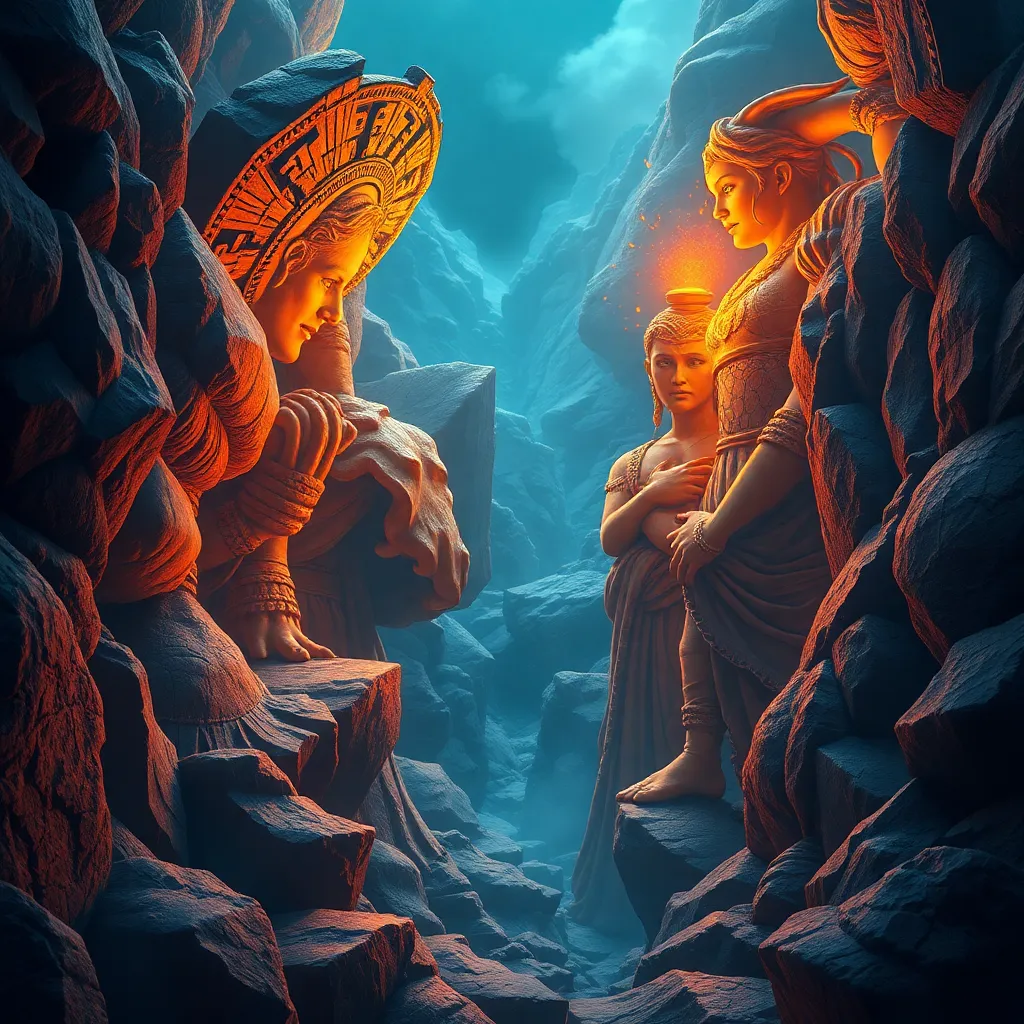The Myth of Heracles: His Journey to the Underworld Explained
I. Introduction
Heracles, known as Hercules in Roman mythology, stands as one of the most celebrated heroes of Greek mythology. Renowned for his incredible strength and numerous adventures, Heracles’ tales encapsulate the essence of heroism, struggle, and redemption. Among his many exploits, his journey to the Underworld is particularly significant, as it not only highlights his bravery but also offers profound insights into themes of life, death, and the afterlife.
This article aims to delve into the events surrounding Heracles’ descent into the Underworld, exploring the implications of this journey and its pivotal role in shaping his character and legacy in Greek mythology.
II. Background on Heracles
Heracles was born to Alcmene, a mortal woman, and Zeus, the king of the gods, making him a demigod. His birth was marked by jealousy from Hera, Zeus’ wife, who set out to make his life miserable. Despite these challenges, Heracles grew to be a figure of immense strength and valor.
Throughout his life, Heracles completed the Twelve Labors, a series of dangerous tasks imposed upon him by King Eurystheus. These labors included:
- Slaying the Nemean Lion
- Capturing the Golden Hind of Artemis
- Fetching the Erymanthian Boar
- Cleansing the Augean Stables
- Capturing Cerberus, the three-headed dog
Heracles’ status in Greek mythology is monumental; he is often seen as the epitome of strength and perseverance. His relationship with the gods is complex, marked by both favor and resentment, particularly from Hera.
III. The Context of the Underworld in Greek Mythology
The Underworld, known as Hades, is a significant realm in Greek mythology, representing the final resting place for souls. It is a place of both despair and peace, where the departed navigate a complex afterlife governed by various deities. Hades, the god of the Underworld, rules this realm alongside his wife, Persephone, who embodies the cycle of life and death.
Key aspects of the Underworld include:
- The River Styx, which souls must cross to enter the Underworld
- Charon, the ferryman who transports souls across the Styx
- The Furies, who punish wrongdoers and maintain order
The beliefs surrounding death and the afterlife in ancient Greece reflect a deep concern with mortality, the spirit’s journey, and the consequences of one’s actions in life.
IV. The Quest: The Capture of Cerberus
Heracles’ journey to the Underworld was primarily motivated by his task to capture Cerberus, the fearsome three-headed dog that guarded the gates of Hades. This task was assigned to him by Eurystheus as one of his Twelve Labors, symbolizing the ultimate test of his strength and courage.
Cerberus represents more than just a monstrous creature; he is a symbol of the boundaries between the living and the dead. Heracles’ ability to capture Cerberus without using weapons further emphasizes his heroic qualities and unyielding spirit.
V. The Descent into the Underworld
The journey to the Underworld was fraught with peril. To reach Hades, Heracles had to navigate the dark and treacherous landscape of the Underworld, where the souls of the dead linger. His descent was not merely a physical journey but also a metaphorical one, confronting his fears and the inevitability of death.
During his journey, Heracles encountered several notable figures:
- Charon, who initially refused to ferry him across the Styx without payment
- The Furies, who sought to challenge him
- Various souls who offered insights into their lives and deaths
Heracles was driven by his motivation to fulfill his task, but also by a desire to prove that even death could be faced and overcome.
VI. Heracles’ Confrontation with Hades
Upon reaching the Underworld, Heracles confronted Hades himself. This interaction is pivotal, highlighting Heracles’ bravery and determination. Hades, impressed by Heracles’ audacity, agreed to let him take Cerberus, provided that he could overpower the beast without weapons.
This confrontation illustrates Heracles’ character. Unlike many heroes who would cower in the face of death, Heracles boldly faced Hades, showcasing his unwavering spirit and resolve. His actions reflect a deeper understanding of life and death, transcending mere physical strength.
VII. The Return: Implications of Heracles’ Journey
Heracles’ journey to the Underworld and back had profound implications for his character development. He emerged not just as a stronger hero but as one who had faced death and returned with new wisdom. His experience in the Underworld added layers to his character, intertwining themes of life, death, and resurrection.
The symbolism in Heracles’ story is rich. His descent represents the struggle against the inevitability of death and the quest for redemption. The journey reshapes his legacy, depicting him as a hero who not only fought monsters but also faced the ultimate challenge of confronting death itself.
VIII. Conclusion
In summary, Heracles’ journey to the Underworld is a crucial episode in Greek mythology that encapsulates his character as a hero. From his origins and labors to his brave confrontation with Hades, this myth reflects themes of courage, the complexity of life and death, and the enduring quest for meaning.
Today, the myth of Heracles continues to resonate, reminding us of the universal struggles we face and the bravery required to confront our fears. His legacy as a hero endures, inspiring countless adaptations and interpretations throughout history and into contemporary culture.




